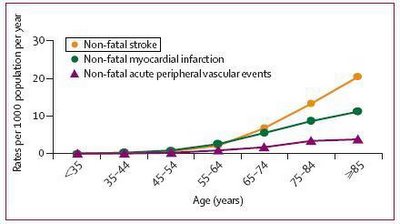Based on "zoneplate - Magnolia"
by low resolution of Flickr.
Created with fd's Flickr Toys.
WSJ Page One news item today by Thomas Burton talks about a movement by some in Neurointensive Care to use scientifically reasonable (but still incompletely unproven) methods to treat comatose stroke patients. These are patients that according to current standards of practice are deemed incurable. Some like Dr. Stephan Mayer, Director of Columbia University's Critical Care Neurology, disagree.
They say many of the studies underlying the earlier consensus are out of date, and they believe newer treatments such as one designed to cool the brain may help stroke patients in comas. "Doctors are telling people there's no hope when, in fact, there is," says Dr. Mayer.
Dr. Justin A. Zivin at UCSD Stroke Center, who was instrumental in the development of tPA stroke therapy, responds:
"It would be extraordinarily helpful if they had evidence," he says. "Have they proven that these therapies are better than nothing? I'm not saying it won't ultimately be proven." Dr. Zivin says this is one reason many hospitals have yet to embrace the idea of a separate neurocritical care unit.
Dr. Mayer:
"We have to push the envelope and do things that at least are well-grounded in the scientific evidence that is available."
One such still-experimental treatment is "brain cooling", which we note is also being tested at UCSD's Stroke Center.
The Oxford Vascular Study published in this week's The Lancet found that, at least in the UK, the clinical burden of stroke has surpassed that of heart disease.
In men, the incidence of stroke is comparable to coronary artery disease (CAD), while in women the risk of stroke is significantly higher than the risk of CAD:

The risk of non-fatal (but potentially debilitating) stroke is also much higher than that of non-fatal (likewise debilitating) CAD:

As WSJ notes,
Aggressive treatment of stroke victims can have a serious downside. If a patient is kept alive for a few extra weeks in an intensive-care unit only to die at the end, the cost may be tens of thousands of dollars with no benefit. The American Stroke Association estimates that the annual U.S. cost of stroke care is $35 billion.
Technorati Tags:
medicine stroke evidence-based medicine vascular diseases brain cooling



No comments:
Post a Comment